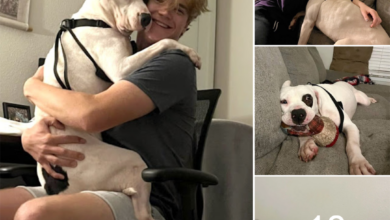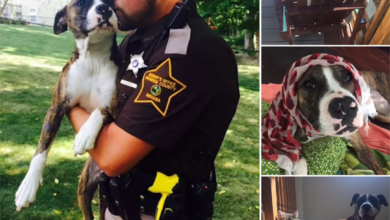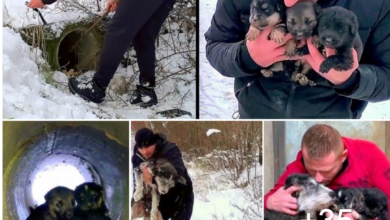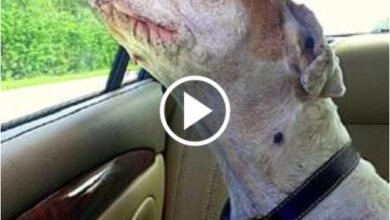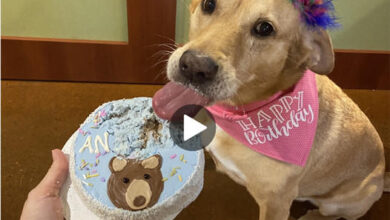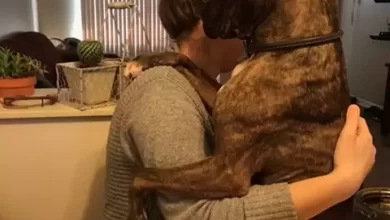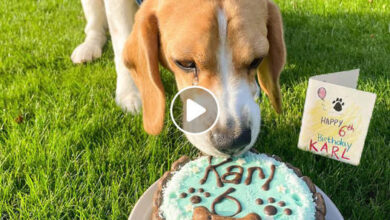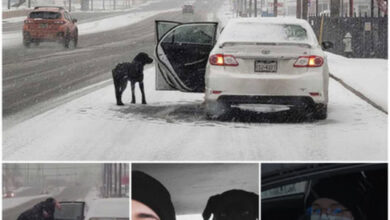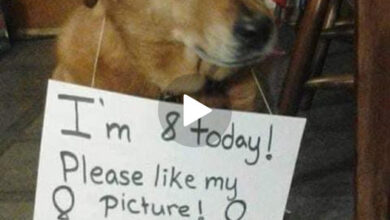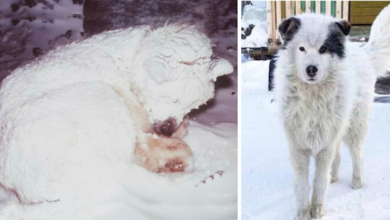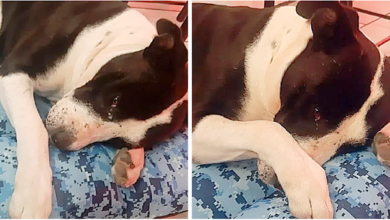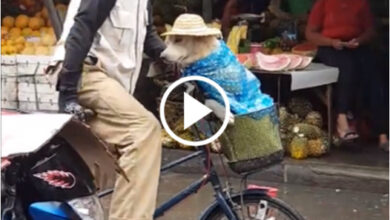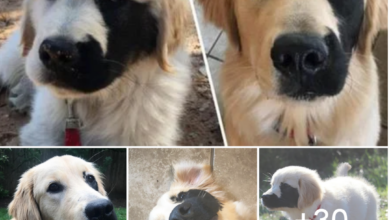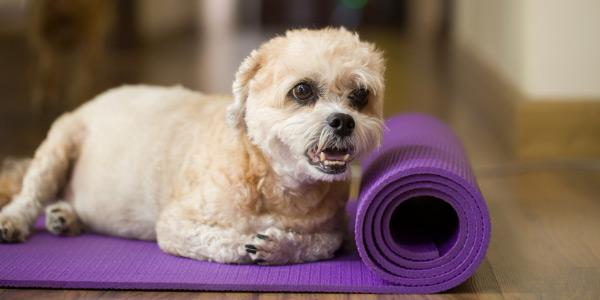
You look at your adorable little puppy and can’t help but feel overwhelmed with love. But as you pick them up, you realize they’re much heavier than they should be. You begin to worry about their health and wonder how you can help them lose weight.
Fear not! With a few simple steps, you can help your fat puppy slim down and become healthier.
As the saying goes, ‘An ounce of prevention is worth a pound of cure.’ The same applies to your pup’s weight loss journey. It’s much easier to prevent obesity than to try and reverse it later on. However, if your furry friend has already packed some extra pounds, don’t fret. With a little effort and patience, you can get them back in shape in no time!
Consult with a Veterinarian
You’ll want to consult with a veterinarian to develop a personalized weight loss plan for your chubby pup. Regular check-ups are important for monitoring your dog’s progress and ensuring that their health isn’t compromised during the weight loss journey.
A qualified vet will be able to recommend an appropriate diet and exercise regimen based on your puppy’s unique needs. Finding a suitable vet is crucial in helping your overweight puppy shed those extra pounds. Look for someone who has experience with animal nutrition and weight management, as well as someone who takes the time to understand your concerns and goals for your pet.
Your chosen vet should also be willing to work collaboratively with you throughout the process. During your consultation, make sure to discuss any underlying medical conditions or medications that may affect your dog’s ability to lose weight. With this information, you can work together with your vet to develop a realistic plan that takes into account any limitations or special considerations.
Once you have established a solid foundation of support from a qualified veterinarian, you can begin adjusting your dog’s diet accordingly. By working closely with your vet, you can ensure that any dietary changes are made gradually and safely, without upsetting the balance of nutrients in their food.
Adjust Your Dog’s Diet
Switch up your furry friend’s food intake to include more vegetables and lean protein sources, rather than high-fat treats. The key to helping your puppy lose weight is by ensuring they are getting a proper balance of nutrients while still controlling their portions.
Consider feeding them smaller meals throughout the day instead of one large meal to help with portion control. When adjusting your dog’s diet, it’s important to choose foods that are low in fat but still provide essential vitamins and minerals. Vegetables such as broccoli, carrots, and green beans can be cooked and added into their meals for added fiber and nutrients. Lean proteins like chicken or turkey breast can replace fatty cuts of meat in their diet.
Keep in mind that weight loss should be gradual for puppies, so don’t drastically change their diet overnight. Slowly introduce new foods into their diet while monitoring their progress regularly. Once you’ve established a balanced nutritional plan for your pup, you can move on to increasing physical activity to further aid in weight loss.
Transitioning into the subsequent section about ‘increase physical activity,’ consider incorporating activities that both you and your puppy can enjoy together such as going for walks or playing fetch at the park.
Increase Physical Activity
To help your chubby pup shed some extra pounds, it’s important to increase their physical activity. Start with short walks around the block, gradually increasing the duration as your dog becomes more comfortable.
Incorporate fun games and activities like fetch or frisbee to keep them engaged and motivated. As your furry friend gets fitter, gradually increase the intensity of their exercise routine to ensure continued progress towards a healthier weight.
Remember to always consult with your veterinarian before starting any new exercise program for your pet.
Start with Short Walks
Start with short walks. Take your chubby pup for brief, enjoyable strolls around the neighborhood to kickstart their weight loss journey. Leash training is essential before starting any outdoor activities with your furry friend. Consistency is key in leash training, so make sure you start slowly and gradually increase the distance and duration of walks.
During short walks, focus on keeping a steady pace that allows your puppy to move comfortably while burning calories. As they gain endurance, gradually increase the length of each walk. Over time, you can also add some fun games and activities to keep them engaged and motivated.
In the next section, we’ll explore some exciting ways to incorporate exercise into your pup’s routine without making it feel like a chore!
Incorporate Fun Games and Activities
Get your pup excited about exercise by incorporating fun games and activities into their routine. Interactive toys are a great way to keep them engaged while burning off excess energy. You can also introduce agility training, which not only helps with weight loss but also improves their overall physical coordination.
Aside from these traditional forms of exercise, you can also take your pup on hikes or runs in nature trails. Going for a swim at the local dog park is another option that will help them cool down during hot weather while providing resistance training.
Incorporating different activities into their routine will prevent boredom and make exercising more enjoyable for both you and your furry friend. As your pup gets more comfortable with exercising, gradually increase the intensity of their workouts to promote further weight loss. This will be discussed in the subsequent section about ‘gradually increasing exercise intensity’.
Gradually Increase Exercise Intensity
As you and your furry friend become more comfortable with exercising, it’s important to gradually increase the intensity of your workouts in order to continue seeing progress towards a healthier lifestyle.
One effective way to do this is by incorporating interval training into your routine. This involves alternating between periods of high-intensity exercise and slower recovery periods, which can help improve cardiovascular health and burn more calories.
It’s also beneficial to incorporate outdoor activities into your workout routine. Going for walks or runs in nature can provide mental stimulation for both you and your pup, while also providing a change in scenery from indoor exercise routines.
Remember to always listen to your pup’s cues and never push them beyond their limits. By gradually increasing the intensity of your workouts, you can ensure that both you and your pup are getting the most out of each exercise session.
With these tips in mind, let’s move on to monitoring progress towards achieving a healthy weight for your furry companion.
Monitor Progress
To track your puppy’s progress, you’ll want to keep a record of their weight and measurements in order to see changes over time. This will allow you to adjust their diet and exercise routine as needed. You should weigh your puppy regularly, at least once a week, using the same scale each time.
Here are five tips for monitoring your puppy’s progress:
- Keep a log of their weight and measurements
- Take pictures of them regularly
- Pay attention to how they move and behave during exercise
- Look for signs that they’re becoming more fit, such as increased stamina or muscle tone
- Consult with your veterinarian if you have any concerns or questions
By monitoring your puppy’s progress, you can make sure that they’re on track to reach their weight loss goals. Once you’ve established a routine for tracking progress, it’s important to evaluate whether or not it’s working. If your puppy isn’t losing weight or making progress towards their goal within a few weeks, it may be time to reevaluate their diet and exercise plan.
Providing mental stimulation is another important aspect of helping your fat puppy lose weight. By keeping them engaged mentally as well as physically, you can help prevent boredom and discourage overeating.
Provide Mental Stimulation
Now that you’ve been monitoring your puppy’s weight loss progress, it’s time to shift your focus to providing mental stimulation. A fat puppy needs more than just physical exercise; they also need cognitive challenges to keep them mentally engaged and prevent boredom.
Brain games and puzzle toys are great tools for stimulating their minds while keeping them entertained. Consider incorporating training sessions or obedience classes into your pup’s routine as well. These activities not only provide mental stimulation but can also improve their behavior and strengthen the bond between you and your furry friend.
Training sessions can be tailored to suit your pup’s specific needs, such as addressing excessive barking or leash pulling. It’s important to remember that a bored puppy is more likely to overeat, leading to weight gain.
By providing ample mental stimulation through brain games, puzzle toys, training sessions, and obedience classes, you can help curb the urge to eat out of boredom.
In the next section, we’ll discuss seeking support from professionals in case you need further assistance in helping your fat puppy lose weight.
Seek Support
If you’re struggling to get your furry friend back on track, don’t hesitate to seek support from professional resources. Finding a community of people who have been through the same struggles as you can be incredibly beneficial.
Look for local dog groups or online forums where you can connect with others who are also working towards helping their overweight dogs lose weight. Enlisting help from family and friends can also make a big difference in your pup’s weight loss journey.
Having someone else hold you accountable and cheer you on can provide the extra motivation needed to keep going. Plus, it’s always more fun to work towards a goal with others by your side. Remember that every small step forward is worth celebrating when it comes to helping your pup lose weight.
As you continue on this journey, take time to recognize and celebrate the progress made so far. This positive reinforcement will not only boost your own morale but also that of your furry friend, making them even more motivated to continue on their path towards a healthier life.
Celebrate Success
As you and your furry companion work towards achieving their ideal weight, it’s important to take a moment and celebrate each milestone. Implementing a rewards system for your pup can be an excellent way to motivate them through the challenging process of losing weight. Offer small treats or toys as a reward for good behavior during exercise sessions or when reaching certain goals. Remember that the rewards shouldn’t be high in calories and shouldn’t interfere with their progress.
Finding motivation can also be challenging, but surrounding yourself with supportive people can make all the difference. Share your journey with family and friends who’ll encourage you both along the way. Joining online support groups or finding a pet-friendly gym can also provide opportunities to connect with others on similar journeys. The more support systems you have in place, the easier it’ll become to stay motivated.
Remember that celebrating success doesn’t always mean rewarding with food or treats. Instead, try scheduling playtime with your pup after completing a workout session or going for a walk together in a new park as a reward for sticking to their routine. By focusing on non-food-related celebrations, you’ll continue reinforcing healthy behaviors while keeping your furry friend happy and engaged throughout their weight loss journey.
Conclusion
Congratulations on taking the first step toward helping your fat puppy lose weight! By following the steps outlined in this article, you’ve already made significant progress toward improving your furry friend’s health and well-being. However, it’s important to remember that this journey won’t be easy or quick.
As you continue to adjust your dog’s diet, increase their physical activity, and monitor their progress, there may be times when you feel discouraged or frustrated. It’s important to stay committed and seek support from your veterinarian or other pet owners who’ve gone through a similar experience.
Remember that every small victory should be celebrated – whether it’s an extra lap around the block or a pound lost on the scale. With patience, dedication, and support, you can help your puppy achieve a healthy weight and live a happy life.
So don’t give up – keep pushing forward and watch as your furry friend becomes healthier and happier with each passing day.
Read more:
